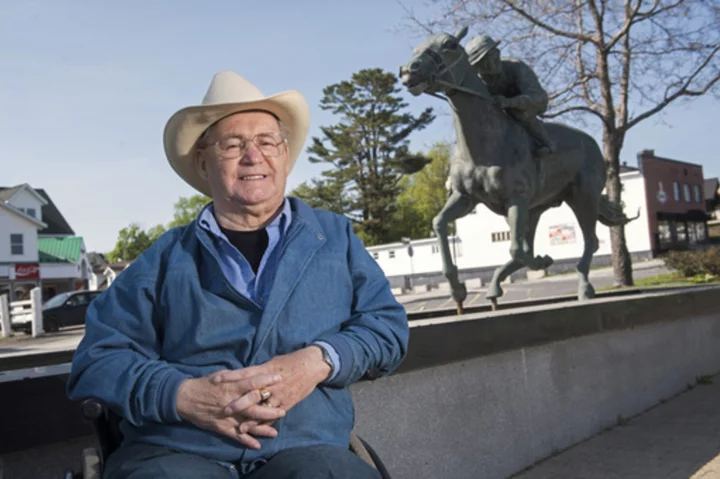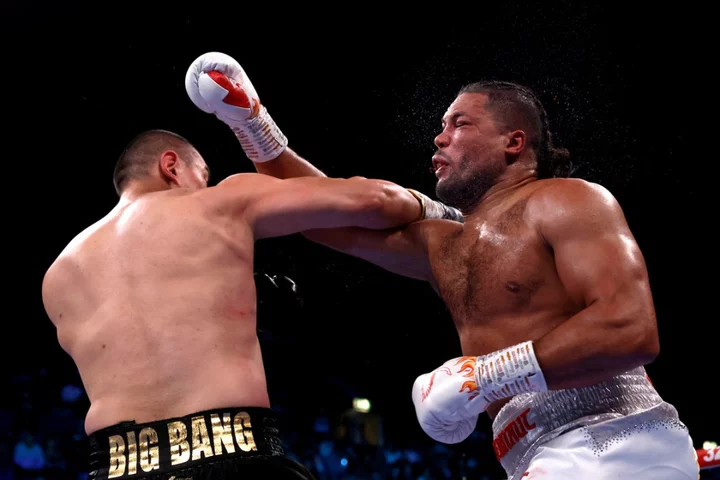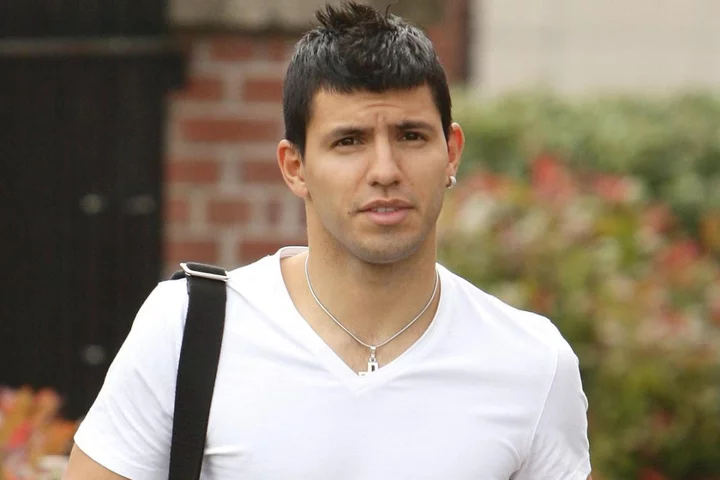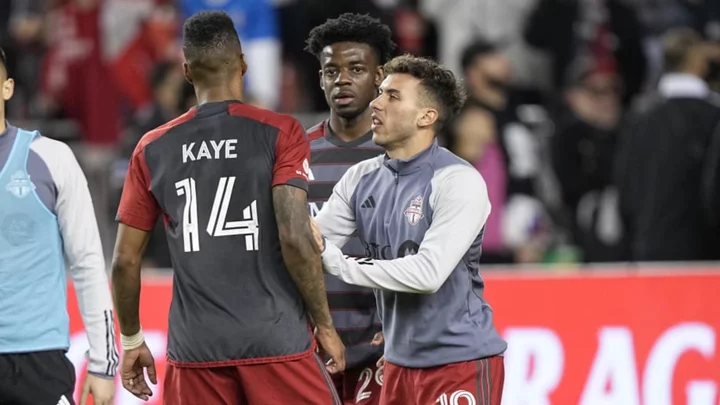From the tiny village of Drummond, New Brunswick, Ron Turcotte rose to the top of horse racing, riding Secretariat to a sweep of the Kentucky Derby, Preakness and Belmont in 1973. Their triumphs ended a 25-year Triple Crown drought. Now 81, Turcotte is the last surviving member of Secretariat's team as he marks the 50th anniversary of their feat with the Belmont Stakes on Saturday.
Here are some stories from his life and career, based on a recent interview with The Associated Press:
FROM LUMBERJACK TO JOCKEY
Turcotte is one of 12 children, including five brothers who also became jockeys. He grew up speaking French in Drummond, outside Grand Falls.
He left school at age 14 to work with his father as a lumberjack. He was slight in stature like his dad, who had him work with the draft horses that hauled the logs instead of doing the more dangerous work in the forest.
At 18, Turcotte and a friend headed to Toronto with $50 each in their pockets. He was going to join the roofing trade like his brother, but local carpenters were on strike, so they sought any work they could find.
The friends discovered a restaurant that fed them in exchange for washing dishes. To pay for a room, they picked nightcrawlers until the wee hours.
“We got tired and discouraged,” Turcotte recalled.
On the first Saturday in May 1960, the friends emerged from their attic quarters and found a crowd around the television watching the Kentucky Derby. They were cheering on Victoria Park, which finished third as the first Canadian horse to place in a Triple Crown race.
Turcotte asked a man what the Derby was. “The biggest horse race there is in North America,” he replied.
The man asked if Turcotte had found work yet. Told no, he suggested Turcotte try the local racetrack, Woodbine. The teenager made his way there, but got turned away by a guard for not having an entry pass.
Turcotte was told to try the newer Woodbine track located on the outskirts of Toronto. He hitchhiked there the next day. A trainer driving by picked him up and they were waved through the gate by the guard.
MAKING CONNECTIONS
Turcotte made an important connection in 1960 when he met E.P. Taylor, a prominent owner, breeder and businessman regarded as a major force in the development of Canadian racing. He went to Taylor’s farm to learn about thoroughbreds.
“He handed me the shank and said, ‘Keep turning left,’” Turcotte said of cooling out horses after workouts. “I kept turning left for about 30 minutes.”
What Taylor had yet to discover was that Turcotte had spent five years cutting lumber and driving a team of draft horses. He also knew how to shoe horses.
“I had never sat in a saddle before,” Turcotte said.
To earn a living in the bitter Canadian winters, Turcotte galloped horses on the farm to keep them fit.
By 1962, Turcotte had won his first race. He was off and riding on his way to 3,032 career victories.
CREATING FAMILY
Turcotte married his childhood sweetheart, Gaetane, in 1964. The couple has four daughters: Tina, Anne, Lynn and Tammy. After his career ended prematurely, he returned to his hometown to live on his farm, where each of his daughters had their own horse.
BEFORE SECRETARIAT
In 1971, Turcotte took note of a colt named Riva Ridge. The horse was bumped in his first start and finished well back. He won his next two races before losing again.
Turcotte stopped by trainer Lucien Laurin’s barn and told him, “You have the best 2-year-old in North America.”
Laurin changed jockeys and hired Turcotte for Riva Ridge’s next start. They won despite the colt bolting to the outside after leaving the starting gate.
Turcotte realized the colt was afraid of close quarters after what happened in his first race. He asked Laurin to give him a month with Riva Ridge away from racing, believing he could help the colt overcome his fear.
“He didn’t want to give me 30 days but I insisted,” Turcotte said. “I needed to re-school him.”
Turcotte’s instincts proved correct. Riva Ridge won four straight stakes races in the fall of 1971 and earned honors as that year’s 2-year-old champion. They teamed to win the Kentucky Derby and Belmont Stakes the following year.
MEETING THE QUEEN
Turcotte met Queen Elizabeth II in 1970 after riding Fanfreluche to victory in the Manitoba Derby during the province’s 100th birthday. She presented him with the winner’s plate.
The mare was sired by Northern Dancer, the first Canadian-bred horse to win the Kentucky Derby in 1964 who went on to become one of the sport’s greatest sires.
“She was a Northern Dancer fan,” Turcotte said of the horse-loving queen, “so she had a lot of questions about Northern Dancer.”
Five years earlier, he had met the Queen Mother.
“My dad and mother were both very impressed,” he said.
MEETING SECRETARIAT
Turcotte stopped by the Laurin's barn one day to visit Riva Ridge.
Two stalls down, a chestnut colt stuck his head out. “Who’s that pretty boy you have here?” Turcotte asked.
Laurin replied, “He’s too good-looking to be a racehorse.”
Still, the trainer told Turcotte to get on Secretariat and give his opinion.
“It was love at first sight and first ride,” Turcotte said. “He was so nice. He was like an older horse, he was quiet, very intelligent.”
Turcotte was soon getting on Secretariat regularly, teaching him to work in the mornings, increase his speed and learn how to break from the starting gate. The jockey was soon calling his new friend “Big Red,” a nickname that has stuck to this day.
“You’d teach him something one day and he’d come back the next day and he’d do it,” Turcotte said. “Not all horses are that intelligent.”
A MAN AND HIS HORSE
Despite a singular focus on the racetrack, Turcotte described Secretariat as a “very kind and loving horse.”
Still, the colt sometimes had a mind of his own.
One morning, Secretariat suddenly reared up and tossed Turcotte over his head. The jockey landed on his feet, unhurt.
“He looked at me like, ‘What are you doing there?’” Turcotte said. “I walked up to him, grabbed the reins and hopped on him again.”
The jockey would visit Secretariat and also greet other horses in the barn.
“He was a little jealous,” Turcotte said. “If I talked to another horse in the next stall, he’d reach over and grab my jacket and pull me back to him.”
A special bond existed between man and horse.
“One time he pinched me a little and I said, ‘Ouch, you hurt me.’ He put his head down like he was so sad,” Turcotte said. “I said to him, ‘It’s OK, you didn’t hurt me.’ His head popped up and his ears were pricked. He was a ham.”
TAKING A FAMOUS PEEK
After winning the Kentucky Derby and Preakness, Secretariat put away the field early in the 1973 Belmont Stakes, using his long, loping strides to widen the gap to 20 lengths.
At that point, the race was against the clock.
With 70 yards remaining in the 1 1/2-mile race, Turcotte looked to his left at the infield teletimer.
“I knew he was setting records all the way down the lane,” he said. “When you’re alone like that, I could hear the announcer very well.”
Secretariat won by an astonishing 31 lengths and his final time of 2:24 remains a record 50 years later.
A CAREER CUT SHORT
Turcotte’s riding career was cut short on July 13, 1978. He fell from his horse, Flag of Leyte Gulf, in his last race of the day at Belmont Park, the site of his Triple Crown triumph. A horse drifted toward the outside, crowding another. Sensing the danger, Turcotte stood in the saddle and yelled to the riders inside of him. His horse clipped heels and stumbled badly, tossing Turcotte over its head.
He wasn’t trampled by any horses, but knew he had broken his neck when he couldn’t feel his legs. Later that year, Turcotte sued several parties but the suit was dismissed in 1986 by New York’s highest court, which cited the inherent risks taken by jockeys.
Turcotte spent many years making appearances at racetracks to raise money and awareness on behalf of the Permanently Disabled Jockeys Fund, which provides help to his fellow injured riders.
In 2015, he broke both legs when the van he was driving flipped after hitting a snowbank in New Brunswick. He requested one blue cast and one white cast, the same colors as Secretariat’s silks. Turcotte and Secretariat are immortalized with a bronze statue in his hometown.
LONE SURVIVOR
Now 81, Turcotte is the last surviving member of Secretariat’s team. The irony isn’t lost on him.
“I thought I’d be the first one to go,” he said, having been a paraplegic since his accident.
Owner Penny Chenery died in 2017 at age 95. Laurin died in 2000.
“He always told me, ’Use your better judgement,'" Turcotte said. “He relied on me for a lot of things. He didn’t always listen.”
Groom Eddie Sweat died in 1998 and exercise rider Charlie Davis followed in 2018.
“Charlie and Eddie were very good horsemen,” he said. “Sweat was beautiful with horses.”
Secretariat died in 1989. He was euthanized after developing laminitis, a painful and debilitating hoof disease.
“When it came to running, he could fly,” Turcotte said. “He was everything. Those memories never leave you.”
___
AP sports: https://apnews.com/hub/sports and https://twitter.com/AP_Sports









